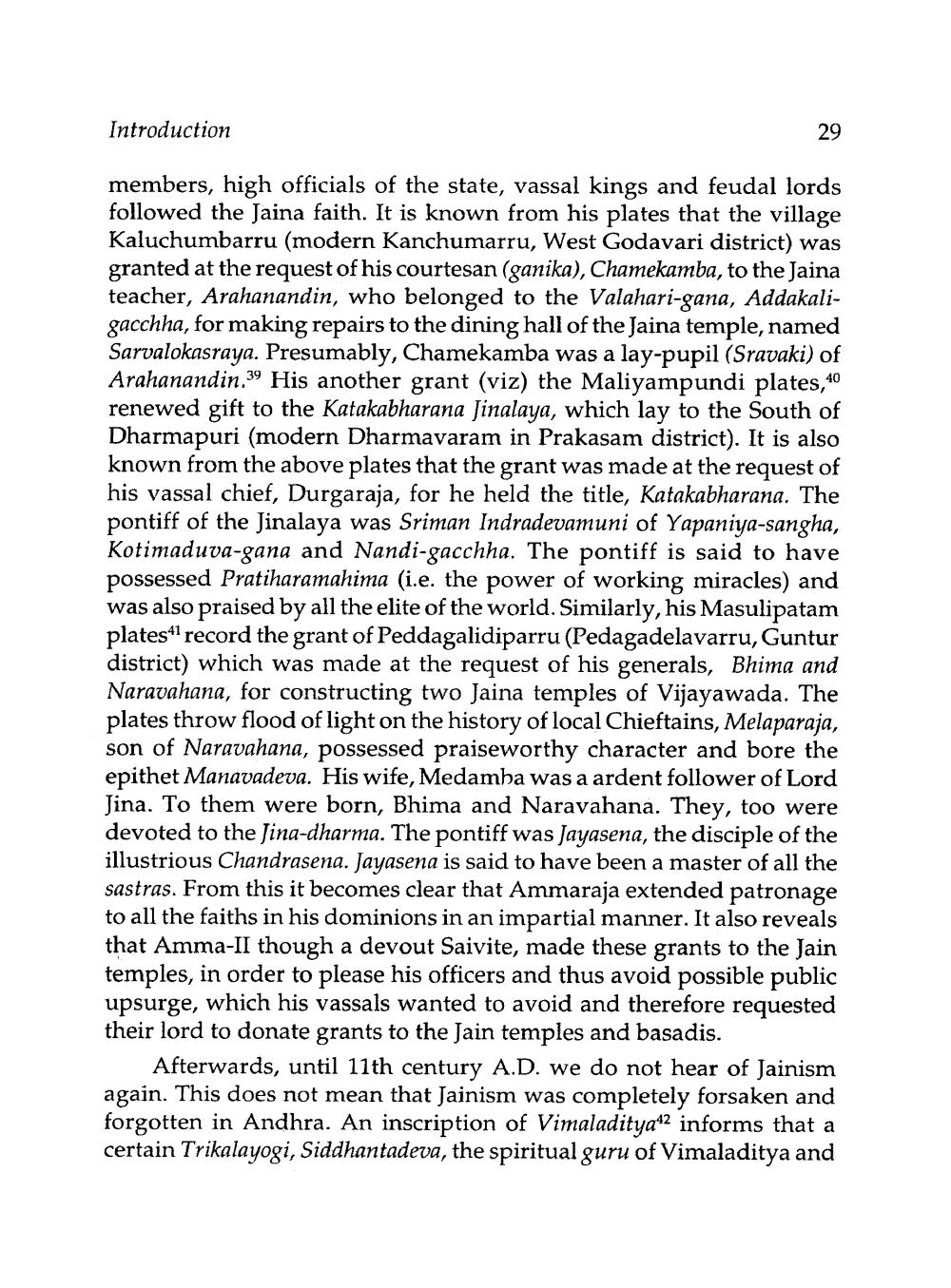________________
Introduction
29
members, high officials of the state, vassal kings and feudal lords followed the Jaina faith. It is known from his plates that the village Kaluchumbarru (modern Kanchumarru, West Godavari district) was granted at the request of his courtesan (ganika), Chamekamba, to the Jaina teacher, Arahanandin, who belonged to the Valahari-gana, Addakaligacchha, for making repairs to the dining hall of the Jaina temple, named Sarvalokasraya. Presumably, Chamekamba was a lay-pupil (Sravaki) of Arahanandin.39 His another grant (viz) the Maliyampundi plates,40 renewed gift to the Katakabharana Jinalaya, which lay to the South of Dharmapuri (modern Dharmavaram in Prakasam district). It is also known from the above plates that the grant was made at the request of his vassal chief, Durgaraja, for he held the title, Katakabharana. The pontiff of the Jinalaya was Sriman Indradevamuni of Yapaniya-sangha, Kotimaduva-gana and Nandi-gacchha. The pontiff is said to have possessed Pratiharamahima (i.e. the power of working miracles) and was also praised by all the elite of the world. Similarly, his Masulipatam plates11 record the grant of Peddagalidiparru (Pedagadelavarru, Guntur district) which was made at the request of his generals, Bhima and Naravahana, for constructing two Jaina temples of Vijayawada. The plates throw flood of light on the history of local Chieftains, Melaparaja, son of Naravahana, possessed praiseworthy character and bore the epithet Manavadeva. His wife, Medamba was a ardent follower of Lord Jina. To them were born, Bhima and Naravahana. They, too were devoted to the Jina-dharma. The pontiff was Jayasena, the disciple of the illustrious Chandrasena. Jayasena is said to have been a master of all the sastras. From this it becomes clear that Ammaraja extended patronage to all the faiths in his dominions in an impartial manner. It also reveals that Amma-II though a devout Saivite, made these grants to the Jain temples, in order to please his officers and thus avoid possible public upsurge, which his vassals wanted to avoid and therefore requested their lord to donate grants to the Jain temples and basadis.
Afterwards, until 11th century A.D. we do not hear of Jainism again. This does not mean that Jainism was completely forsaken and forgotten in Andhra. An inscription of Vimaladitya12 informs that a certain Trikalayogi, Siddhantadeva, the spiritual guru of Vimaladitya and




